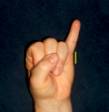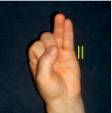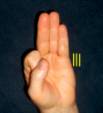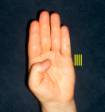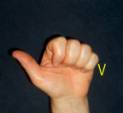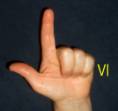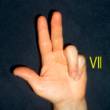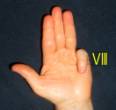Numerals
After the students develop an auditory association of numeral and number, the visual association must be developed. Imagery lifted from human activity and body geography can be used to associate the forms of numerals with number.
The numeral one can be lifted from the image of one boy or girl bouncing one ball under one sun. The vertical line of the one is lifted from the image of the boy or girl standing straight and tall and the crown of the one is lifted from their sloping arm bouncing the one ball. The sun sets and the moon rises and from these two the form of the numeral two can lifted. (pics01/a)
The form of the numeral three can be lifted from the scene of one boy or girl greeting the moon and the sun or from the body geography of head over the belly with the heart a little to the left. (pics02/a)
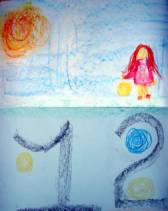
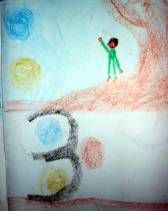
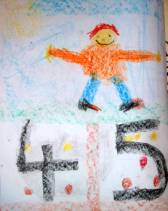
In a likewise manner, the forms of numerals four through nine can be found and associated with the numbers they represent. (pics03/04/a)
After students are familiar with the forms and names of the Arabic numerals, some enrichment work can be done with the Roman numerals.
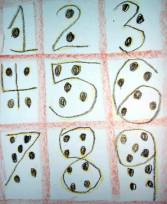
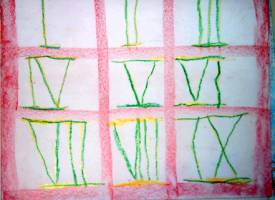
The Roman numerals one through ten can be introduced (pics05) together with a relatable approach of counting with your fingers. For each numeral (I), (II), (III), and (IIII) instead of (IV) the fingers can be extended in turn starting with the pinky-finger and continuing with adjacent fingers. (pics06/7/8/9)
For the numeral (V) all fingers are curled and only the thumb is exended. (pic10) For the numerals (VI), (VII), (VIII), and (VIIII) instead of (IX) the thumb is held extended and the fingers are uncurled in turn starting with the pointer-finger. (pics11/12/13/14) Using one hand to count the ones and the other hand to count the tens students can count to ninety-nine with their fingers and thumbs. To keep the noise down during a math review students can quietly give their responses with their fingers.
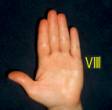
Introduce the numeral and number zero by having students place ten plasticence stones on a piece of drawing paper stacked flat on the paper in the triangular manner they learned in the counting lesson. (pics15/16/17) There will be four plasticene stones at the bottom of the triangle. (pic18) Then have the students draw an oval around the stones.
Now have the students pick up the triangle of stones and squash
them into one large stone. Point out to the students that now there are no little stones left in the oval and that makes zero, so an oval with no stones makes a zero. Also, point out to the students that now we have one ball of ten and no little stones and that makes a ten. (pic19) Write the numerals for ten on the board while you are explaining how they make a ten.





